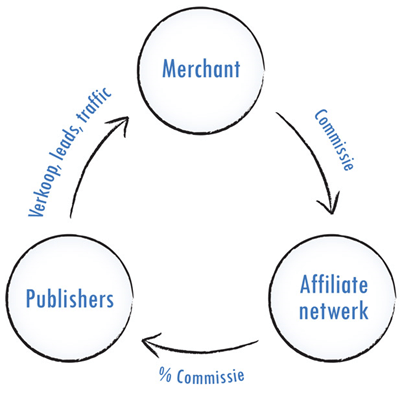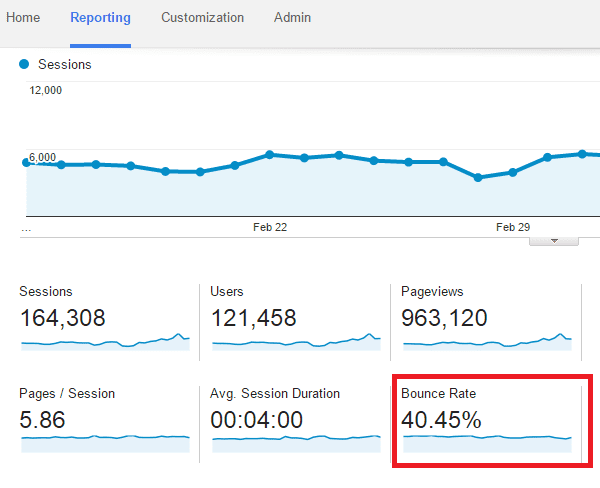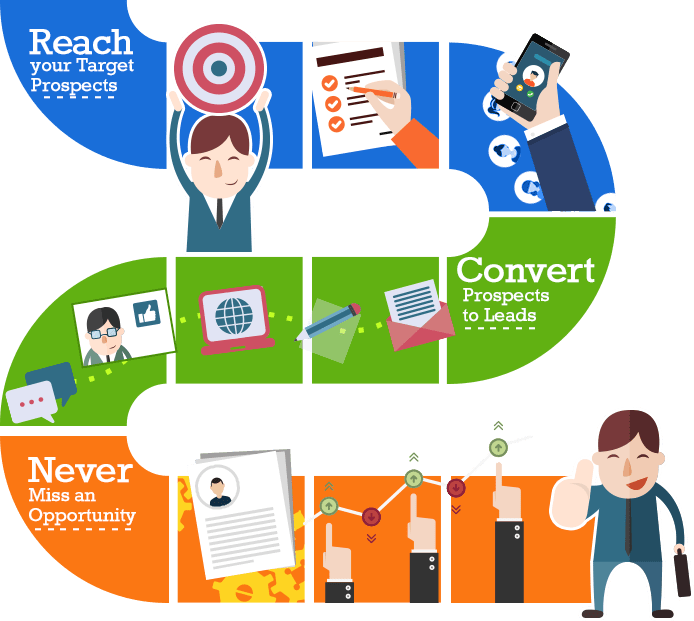Chances are, if you visit TopTut.com often, you have heard of affiliate marketing. You may be interested in it, but you have no idea where to start. For beginners, I will explain how you can start an affiliate website, and based on this article, and you can get started and build an affiliate business.
I always start setting up the website, later switching to the content part of affiliate marketing itself. But first of all, a refresher, what is affiliate marketing, again?
Affiliate marketing at a glimpse
Affiliate marketing is a form of marketing where advertisers – often shops – collaborate with partners (affiliates) on a performance-based basis. This is a pay-per-sale model where the advertiser only pays out upon results. The affiliate will then receive a commission % from the sale that they have made. Utilizing affiliate marketing, advertisers can reach a larger audience, for which they only pay when there is a tangible result.
Affiliates can, in this case, be many different parties. It can be a fashion or travel blogger, and it can be the consumer association and comparisons or a discount platform (such as Groupon).
In the standard design, there are three parties involved:
1. Advertisers
This is often the webshop, where they offer products or services. Aim: to generate extra traffic and sales and make promotional material available for that purpose and link a committee to the results.
2. Affiliates
These are the publishers or publishers of websites, and they support the advertisers in obtaining new customers, inform visitors of offers and send visitors to the advertiser. Does this lead to conversion? Then they get a certain commission for that.
3. Networks
An affiliate network is a link between the advertiser and the affiliates. They ensure correct measurement of the results and see where the reward is paid or not.

But, where do you start with affiliate marketing?
Choose your domain name and build your website: 4 steps.
To begin with, a domain name and a website are so handy. Think first of which niche you want to focus on. Is this fashion, discount or travel for example? Tune in your domain name and keep it preferably easy. When capturing a domain, it is good to see where you want to do this. Pay particular attention to the user-friendliness of web hosting. WebHostingPad and GlowHost, for example, have a one-click install of WordPress, which immediately saves you a lot of technical knowledge, which you probably lack in the initial phase. This way, you can avoid FileZilla and other more difficult set-ups.
1. Website
In the initial phase, I would personally go for the use of WordPress software. WordPress is open source software for CMS, which has evolved at breakneck speed in recent years. An additional advantage: it is constantly updated. Google likes it. It is also very user-friendly (nowadays) and also free of charge. Another important point: WordPress has a lot of documentation available through the open-source system, useful if you get stuck. YouTube is also full of tutorials on how to start with WordPress or set up a theme.
2. Theme
You can choose one of the free themes that WordPress offers, and my experience is that you quickly run into limitations. Via Themeforest.net or Creative Market, you can find WordPress themes that offer more possibilities.
ElegantThemes is another great alternative, where you can download 80+ themes for the price of one. Find a theme that matches your preferred niche (travel/fashion etc.), and pay attention to the functionalities incorporated into a theme.
Note: the most popular themes at Themeforest are due to a reason, mostly user-friendliness. Also, pay attention to the responsiveness of a theme. That means that it automatically adjusts itself on all screens. The site then comes out on the smartphone, tablet, and computer.
You can choose one of the free themes that WordPress offers, my experience is that you quickly run into limitations.
Often you can, if you have purchased a theme, import the complete demo of the theme. After importing, you soon have the basis of your website, and you do not have to build ‘real’ anymore. Then it is a matter of making text adjustments and replacing pictures. Start with that and gradually learn the basics.
Before you start your content, it is good to walk through the default settings. Here you can choose your URL structure. For example, choose which page should serve as your homepage and set the time and language.
3. Plug-ins
Almost all themes have extensive documentation that can help you further. If Visual Composer is not integrated into the theme, this is really a plug-in that is worth buying. This is a drag-and-drop builder, so you do not need HTML knowledge at the beginning. Nevertheless, it is worthwhile to delve into this.
4. Yoast & Akismet
These are two plug-ins that also come in handy. With Akismet, you protect your website against spam. With Yoast, you have a tool that helps you analyze search engine marketing (SEO). The Yoast plug-in helps you clarify what you need to look for when it becomes visible in Google and actually helps you get the hang of part of search engine optimization. You can link the Yoast plug-in to webmaster tools (more below) for further insights into where you can improve in terms of content.
Analytics, webmaster tools & plug-ins

Is your website listed? Then it is interesting to integrate Google Analytics. Create a Google Analytics account and link the GA code to your website. Here are plug-ins for WordPress. Search for Google Analytics, and they come forward. Then it is still a matter of installing and activating. Slowly but surely, the results will become visible when you log into Analytics.
You can then link your website to webmaster tools (also called Google Search Console). With webmaster tools, you can indicate, among other things, which country you are targeting, what your preferred settings should be, and so on. In webmaster tools, you can also submit a sitemap, making it easier for Google to crawl your site, and the indexation goes faster.
Creating a sitemap can be done quite simply with the help of the aforementioned Yoast plug-in. Using webmaster tools and Google Analytics, you gain insight into a lot of data, with which you can continue to improve your site: measuring is knowing.
Well, now over to the part ‘affiliate marketing for beginners’
Think about which way you want to go, whether this is actually a passion or motivation, and/or whether you can earn money in that market. It can take a while before you see a real return on investment in affiliate marketing. Investment here is, however, a great deal of time, patience, and perseverance. You do not have many costs as a starting affiliate.
The beginning is a road of trial and error and based on that analysis and improvement. Starting a successful affiliate business requires time and motivation. The minimum condition is interest or affinity with the subject you write about.

Content, content, content
Work for several weeks on content that you think will add value or interest to people. After a couple of weeks, you dive deeper into Google Analytics to see how people come to your site. Which content is relevant? On which pages of your website do people sit? And how long do they stay?
Next, try to match your content to the keywords and other data that come up in analytics and webmaster tools. Based on that data, you will really have to answer the questions or provide the information that visitors are looking for, whether these are travel tips or where you can buy the cheapest socks.
Keep improving yourself and your content in this area. Ensure you have the best content in your niche and make it even sharper, more fun, and/or more informative through the analyses.
Affiliate networks
If everything starts to run a little and you have some traction on your domain, it is good to sign up with different affiliate networks. Commission Junction, Share A Sale, ClickBank are among the well-known ones. See if they have programs in your niche and sign up for those programs.
If the advertisers have accepted you, you start by replacing your normal links with affiliate links that you can find in the networks. You will, for example, choose from your travel blog where that trip to Morocco is best arranged or the cheapest. You explain this to your visitors. Do you know how to convince them and book them through your site/links? Then you get a commission for that booking.
[su_pullquote]Do you know how to convince them and book them through your site/links? Then you get a commission from that booking.[/su_pullquote]
Authority, SEO & link building
The success of your website largely depends on the content and the added value of your website. Do you know how to captivate the reader/visitor? Find the visitor he is looking for? Do you offer added value, or is the visitor gone again in no time? This is all very important, but a successful affiliate can – almost – not without SEO, link building, and/or pr. You have to bring your product to the man, right at the beginning.
For indexation and your rankings within Google, it is important that impulses, such as incoming links, go to your website. The more authority the sites have, the more interesting. This can be achieved through good PR, but SEO can also play an important role in this. I can go into that very deeply, but I would like to refer you to the entire collection of SEO articles on toptut.com or the search engine optimization collection at KG.nl.
Social and community building
Nowadays, it is quickly possible to build a community. A strong example of a successful case for community building is tweakers.net. In fact, Tweakers has a small group of visitors percent, but these are loyal-dogs and provide a huge dose of interaction in the forum about everything and nothing. The big advantage of this is that the community helps keep the content on the website relevant and fresh, which is also very interesting for Google. At Tweakers, the community around the website is – at least – as important as the people behind the website itself.
Consider whether this is interesting in your niche. This is something for the later phase, consisting of Facebook fans, social followers, or newsletter members. With Instagram, you can also earn well when it comes to large accounts (through sponsoring), but conversion via social remains a problem. In general, social can be better used for promotion than for conversion.
And now?
You have a website, and based on the content you have constantly improved, there is no traffic coming. You give your visitors in your articles recommendations for your niche, and you link them to the product or journey you recommend. If they go over to purchase, you will receive a commission.
To Sum it Up… 8 Concrete tips to start with affiliate marketing.
- First, go for valuable content with added value. Your success rises or falls on the added value you offer. Later on, go for income.
- Start with WordPress or another free CMS. As a starting affiliate, it is nowhere necessary to invest in a completely custom-made system. Everything you need is – almost – free of charge. It is also good to learn first before investing. Invest first in knowledge, only then in more professional sites.
- It does not matter which niche you choose, but make sure you are interested in it yourself or motivated to dive into it.
- Analyze and improve your content through Google Analytics and webmaster tools
- Have patience. The beginning is a learning process, and in that period, there will also be little financial income—an additional advantage: there are hardly any costs.
- Invest directly in a strong relevant domain name (about 10 dollars per year) and a cheap but quality hosting.
- Also, try doing some things about SEO, link building, and Page Authority. This can boost your site in the Google rankings.
- And again: offer added value.
Do you have any tips to start with affiliate marketing? Let me know in a comment.










It’s awesome.